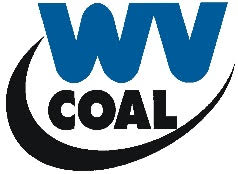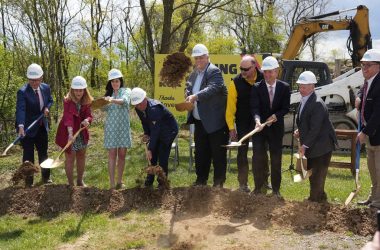CHARLESTON, W.Va. — The West Virginia School Board Association (WVSBA), which represents thestate’s 55 county boards of education and 275 elected county boards of education members, hasforwarded a position paper regarding public education reform to state legislators and members of the state Board of Education.
“In realizing our position paper to other public education interests and to the public in general,we encourage those reading the position paper to bear in mind the ideas we have developed are from local officials.
Here is a link to the position paper: http://wvsba.org/sites/default/files/WVSBA%20School%20Reform%20Position%20Paper.pdf
“For various reasons our voice often seems muted in terms of public education reform discussions. This may be because we, as elected school board members, represent a diverse lot of communities and counties and because we often are seen as chasing petty local issues. We also must take on policy chores prescribed by state officials. These chores often prove controversial among ourcommunities,” according to Lori E. Kestner, a member of the Marshall County Board of Education, whoserves as WVSBA President.
Kestner, however, says “county boards of education and county officials, as national studies show, are vital in implementing education reform. We accept this challenge.”
Her comments are echoed by Kanawha County Board of Education President Ryan White whostates, “Our members bring a unique perspective when it comes to reforming education in West Virginia. We would like to work with legislators and the public in shaping long lasting and permanentreforms to public education in our state.”
White is incoming association president.
In describing the position paper, which WVSBA Executive Director Howard O’Cull drafted onbehalf of the association, Kestner notes the association’s public education reform recommendationswhich, she says, are designed to improve public schooling both in the short-term – referenced as “real-time” issues in the position paper – as well as supporting an approach for deliberative study regarding financing public schools, developing a community-based (rather than state-prescribed) accountability model to hold schools accountable, and careful deliberation regarding public education deregulation.
In terms of deregulation, Kestner says the position paper notes the state’s historic reliance on “Charleston-based and Charleston-prescribed” ways for governing schools. “As we note in the position paper, this approach is reinforced through a uniform approach to school funding, a uniform approach to facilities – School Building Authority of West Virginia – uniform approach to curriculum and instruction and a uniform approach for personnel laws,” according to Kestner.
She says deregulation must occur in such a way that county superintendents and localadministrators are equipped with the “capacity to lead in new ways. By law and indirectly the stateConstitution county superintendents serve as Chief Executive Officers of county boards. What we state is the need for leadership development which is attuned to greater local autonomy, beginning with ourteachers at the classroom or school levels.”
These are among position paper conclusions or recommendations:
- The West Virginia Department of Education’s Final Report West Virginia’s
Voice https://wvde.us/edvoices/ provides several “real-time”recommendations for public education reform in West Virginia. In addition to many accepted reform notions, the 42 report recommendations weredetermined in an “…inclusive process… providing a safe harbor voice for various(predominately public education constituencies) to explore and develop education reform objectives. Viewed comprehensively…West Virginia’s Voiceillustrates the well-noted principle the process often has import tantamount to the product itself. Based largely on its process, West Virginia’s Voice provides a significant ‘starting point’ or authentic dynamic for various public education constituencies to discuss school reform proposals. The report and resultant recommendations, however, cannot be considered finite regarding school reform in West Virginia.” - The association strongly urges legislators to utilize legislative interim meetings for discussing public education reforms, saying these sessions, in order to be constructive, must be devoid of public “education interest group victimology…”
- The position paper criticizes public education data comparison reports, including those from national groups and organizations, which illustrate the state’s pooreducation outcomes ranking in terms of comparisons with other states. The position paper does not question these conclusions per se but questions whether the reports serve as prompts for school reform or whether they result in knee-jerk programs or education strategies which may prove ill-fit for West Virginia. According to Kestner, “There are considerable questions about who funds many of these studies. That is a real problem – the agendas of these studies. Also these data ‘snapshots’ of our schools is isolated from the fact our school system must be seen within the dynamics of our communities, our culture and our student needs.” She points to the position paper wording, “…(In) readingone of these reports, including the customary catalog of dismal findings orhistrionic conclusions, he or she will have read them all.” Dr. O’Cull makes ourpoint: “We know our situation. We must improve our schools but the endeavor must involve everyone and to be effective change agency must be allowed to form at the local level. As has been proven in the past, It will not be prompted by the negative, and state officials, especially state education leaders, appear on the defensive trying to defend our school system, often point-by-point against this barrage of reports. Of course, this is the power of these reports: To put us on the defensive sometimes with knee-jerk state reforms,” said Kestner.
- The state’s county board of education system needs study, given steadily declining student populations, scattered areas of economic growth – “pockets” –rather than statewide economic growth, an aging population, and considerations such as excess levies which county boards find harder to pass. According to Kestner, “we also have to realize in many of our counties, the county board, localgovernments or branches of state government are major employers. While this is not an economic questions, it has considerable fiscal implications for counties. In essence, these economic drivers help counties maintain fiscal stability. That being said we want the best education for our students. As we look toward studying possibly new models for structuring schooling, we cannot approach this through preconceived notions or political bias.”
- Existing laws allow an entire school board to become an innovation zone district.“This law, adopted in 2014, had good intentions but was watered down throughpressure of teacher unions and the state Board of Education’s enacting policy. If legislators are serious about decentralizing public schools they will use thisapproach combined with greater school accountability and teacher leadership,”said Kestner.
- “Either state leaders create Innovation Zones or establish charter schools. Simply put, it is one or the other and one is not the other. Legislators must realize the goals of these concepts differ widely. To say charter schools can be replaced by Innovation Zones misses the point – charter schools are schools with one or more identified purposes according to their charters. Innovation Zones are dedicated to incremental changes is schools or reform as prompted at the school or district level and as sustained at the school or district level. It becomes a very concentrated question: Can schools arrive at school- or district-sponsored reforms which are innovative, have buy-in with school faculties and county boards and effect real change? Conversely, charter schools may prove problematic in a significant sense: Their seeming ‘intrusion’ into school districtswith the potential for little oversight,” Kestner stated.
- Review of school personnel laws must be done carefully because, under state laws, the county superintendent is responsible for recommending personnelactions by county board, said Kestner. “That is the rub, but it also protectspersonnel. We do need to see how these laws affect schooling and, from there,develop ways to amend them as necessary. It must be deliberative,” according toKestner.In discussing the position paper, Mary Jo Thomas, WVSBA’s Executive Legislative chairperson,states, “We will cooperate in any way possible to ensure serious public education reform isenacted in West Virginia. This organization has and will continue to promote excellence inpublic education.”To review the entire position paper, visit the association’s website – www.wvsba.orPlease contact Association Executive Director O’Cull for question or comments.Howard M. O’Cull, Ed. D.,West Virginia School Board Association Executive Director P.O. Box 1008
Charleston, WV 25324Physical Business Address:2220 Washington Street, East Charleston, WV 25311304-346-0571 or 304-549-9463 (cellular)




